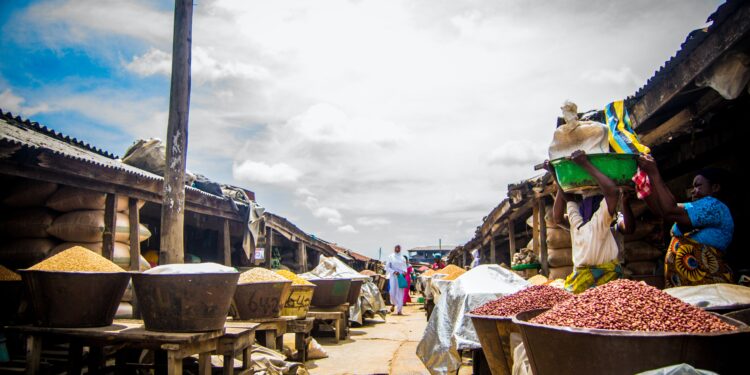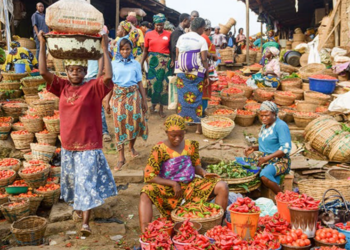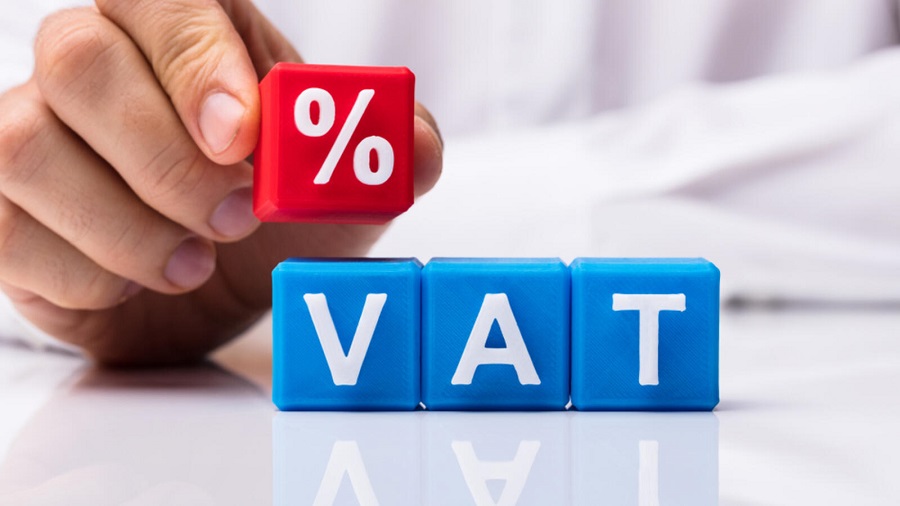Nigeria’s headline inflation rate in September 2024 rose to 32.70%, up from 32.15% in August 2024 after slowing down for two consecutive months.
This was according to the National Bureau of Statistics (NBS) Consumer Price Index (CPI) report, which stated that inflation during the month was propelled by increases in transportation costs and food prices.
On a year-on-year (YoY) basis, the rate was 5.98-%points higher than the 26.72% recorded in September 2023, indicating a significant increase in inflation over the past year.
Also, on a month-on-month (MoM) basis, the headline inflation rate in September 2024 was 2.52%, 0.30% higher than the 2.22% recorded in August 2024. This indicates that the average price level increased at a faster rate in September compared to August 2024.
The food inflation rate in September 2024 was 37.77% year-on-year, marking an increase of 7.13 percentage points from the 30.64% recorded in September 2023.
On a month-on-month basis, the food inflation rate in September 2024 stood at 2.64%, reflecting a 0.27% rise compared to the 2.37% recorded in August 2024.
Staple foods have experienced significant year-on-year price increases, largely due to inflation, supply constraints, and demand fluctuations. While tomatoes shown a month-on-month price decrease, others continue to see steady growth in prices on both a monthly and yearly basis. Staples such as beans and rice, crucial to daily meals, have seen the most significant increases, reflecting economic challenges that continue to affect the affordability of basic necessities.
Below are the 10 most expensive staple foods in Nigeria in September 2024, based on the latest data from the NBS:
10. Gari (White, Sold Loose)
Gari, a popular food staple made from processed cassava, experienced a YoY increase from N467.89 in September 2023 to N1,170.25 in September 2024. The 4.08% MoM rise indicates persistent inflation, with the price in August standing at N1,124.40. Zamfara reported the highest price at N1,434.18, while Kwara recorded the lowest at N1,013.46, highlighting regional variations.
9. Local Rice (Sold Loose)
The price of local rice increased significantly from N757.06 in September 2023 to N1,914.77 in September 2024. A monthly rise of 4.57% from August’s N1,831.05 shows that demand for rice remains high despite inflation. Kogi had the highest price at N2,688.04, while Benue offered some relief at N1,229.14, highlighting notable state-level disparities.
8. Tomato
Tomato prices rose by 152.94% YoY, from N565.69 to N1,430.87, despite a MoM decline of 5.01% from N1,506.35 in August. Abuja recorded the highest price at N2,212.61, while Kano had the lowest at N656.21, reflecting considerable variation in supply across regions. Tomatoes remain crucial for Nigerian cuisine, meaning even slight price changes can impact household budgets.
7. Plantain (Ripe)
Ripe plantain, a favorite staple in Nigerian meals, increased from N586.43 in September 2023 to N1,500.43 in September 2024, showing a YoY increase of 155.86%. MoM, the price remained stable with a slight increase of 0.52% from N1,492.63 in August. Edo had the highest price at N2,251.67, while Yobe reported the lowest at N806.94, indicating regional variations in plantain production.
8. Tilapia Fish (Fresh)
Tilapia fish, a fresh-water fish widely consumed across Nigeria, rose by 156.50% YoY, from N1,501.36 in September 2023 to N3,850.97 in September 2024. The MoM increase of 3.76% shows persistent inflationary pressure, with Ebonyi recording the highest price at N6,176.05 and Taraba having the lowest at N2,000. Fish prices are influenced by transportation challenges, making them particularly volatile.
5. Plantain (Unripe)
Unripe plantain, another popular meal ingredient, recorded a YoY rise of 177.79%, increasing from N543.97 to N1,511.09 in September 2024. The MoM rise of 4.19% from N1,450.32 in August shows continued inflation in the food market. Ekiti had the highest price at N2,200, while Taraba reported the lowest at N809.72. The affordability of plantain has become increasingly challenging for consumers.
4. Yam Tuber
Yam tubers saw a 180.97% YoY increase, from N593.83 to N1,668.49. Though the monthly change was minimal, at 0.40%, the high annual inflation reflects increasing production and transportation costs. Kwara had the highest price at N3,999.58, while Adamawa reported the lowest at N746.67. Yams are an essential staple, and this price increase reflects deeper market constraints.
3. Broken Rice (Ofada)
Ofada rice prices rose sharply by 213.36% YoY, from N752.97 to N2,359.47 in September 2024, with a 5.61% MoM increase. Osun reported the highest price at N3,300, while Adamawa had the lowest at N1,375. Rice, especially Ofada, is a household staple, and such price increases will heavily impact food affordability for many Nigerians.
2. Beans (White Black Eye, Sold Loose)
White black-eyed beans rose from N691.46 in September 2023 to N2,579.02 in September 2024, representing a YoY increase of 272.98%. The MoM change of 6.31% reflects continuous upward pressure on prices, with Akwa Ibom recording the highest price at N3,198.89 and Adamawa having the lowest at N1,650. Beans are an essential source of protein, and the sharp price rise affects households across the country.
1. Beans (Brown, Sold Loose)
Brown beans topped the list with a 281.97% YoY increase, from N716.97 in September 2023 to N2,738.59 in September 2024. MoM, the price rose by 6.37%, reflecting persistent inflationary pressures. Bauchi reported the highest price at N3,450.04, while Adamawa had the lowest at N1,800. The sharp rise in bean prices raises concerns, as beans serve as a primary protein source in many Nigerian diets.
























